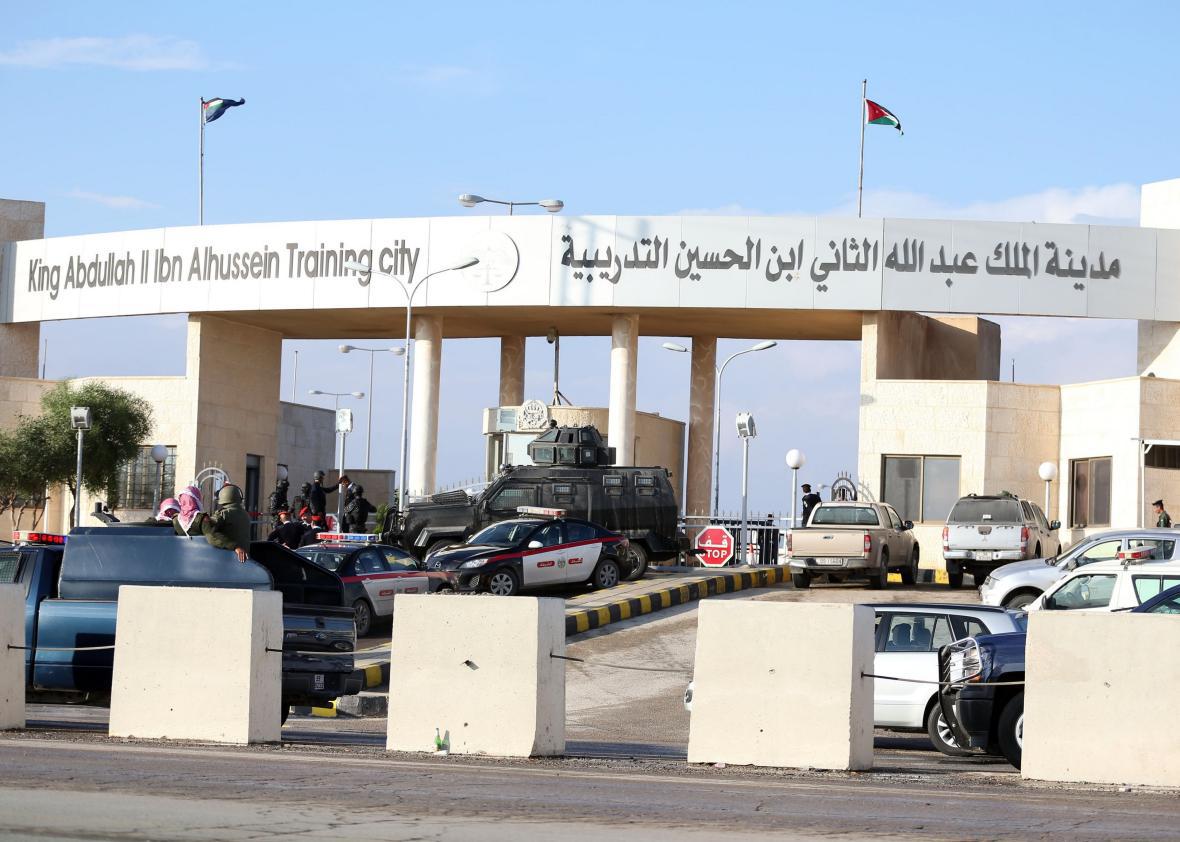Two Americans, two Jordanians, and a South African were killed today when a Jordanian police officer opened fire at a training center in Amman, Jordan. Seven other people were wounded. A Jordanian government source told the AP that the killer was an 11-year veteran of the security forces who had been working at the center for several months. According to President Barack Obama, who spoke about the incident after a meeting with Israeli Prime Minister Benjamin Netanyahu today, the shooter had been dressed in a military uniform.
It’s not clear what the shooter’s motives were, or if he was acting along or on behalf of a group, but the attack takes place in the context of increasing involvement by the U.S. and allies, including Jordan, in the fight against ISIS in neighboring Syria. Jordan has been participating in airstrikes in Syria for over a year, and escalated its involvement in February after ISIS released a grisly video showing the burning of Jordanian pilot Moath al-Kasasbeh. As Suha Ma’ayeh of Time wrote then, “Antipathy to the Hashemite Kingdom of Jordan is in the DNA of ISIS.” The group is, after all, the successor to al-Qaida in Iraq, whose Jordanian founder Abu Musab al-Zarqawi carried out a deadly series of bombings in Amman in 2005. In addition to the airstrikes, the Jordanian government has cracked down hard on ISIS supporters at home.
Still, with its antipathy to the Muslim Brotherhood, close relations with the United States, and peace treaty with Israel, the kingdom is a target for many Islamist extremists, not just ISIS. And the attack at the center—which has trained thousands of police officers from Jordan, the Palestinian territories and other countries in the region—was unusual for the region. While so-called “green on blue” attacks, in which members of local security forces turn on their foreign trainers, have plagued NATO forces in Afghanistan for years—in 2012, they were the cause of an astounding 15 percent of coalition deaths—they’ve been rare in the Middle East. That would suggest this was either an isolated individual with a grievance or a tactical shift by al-Qaida or ISIS. If the latter, given that the training of local forces is a central component of the U.S. strategy in fighting ISIS, attacks like these are particularly worrisome.
